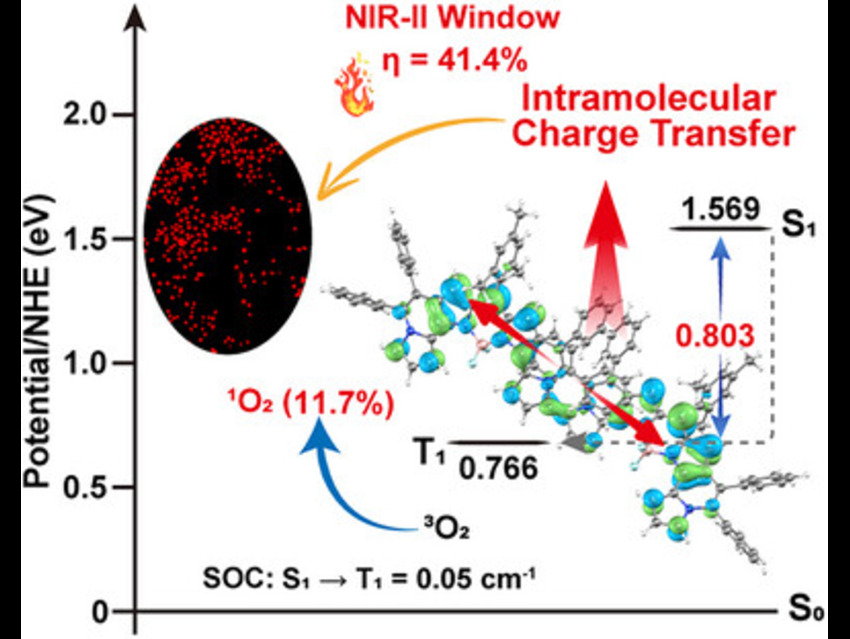Photothermal therapy (PTT) is an emerging cancer treatment that uses light to heat and destroy tumor cells. A common challenge is that many photosensitizers emit too much light, which reduces their efficiency at generating heat. The researchers, Taotao Qiang, Shaanxi University of Science & Technology, Xi’an, China, and colleagues, addressed this issue by designing a new near-infrared (NIR) BODIPY-based photosensitizer, NIR-2BDP, using an iron (Fe³⁺) oxidation method that prioritizes heat production over light emission for improved cancer therapy.
The team introduced intramolecular charge separation and reduced the energy gap between molecular orbitals (HOMO-LUMO) by modifying a BODIPY-based molecule with Fe³⁺ oxidation. This allows for better NIR light absorption and encourages nonradiative transitions, favoring heat generation. The Fe³⁺ oxidation altered the electronic structure of the molecule, enhancing intersystem crossing (ISC), increasing the spin-orbit coupling constant (S₁→T₁) by 2.5 times, and increasing singlet oxygen yield by 2.1 times compared to the unmodified molecule. These modified NIR-2BDP were then encapsulated with DSPE-mPEG2000 to form nanoparticles. These particles were tested under NIR-II light (1000–1700 nm), showing 41.4% photothermal conversion efficiency and effective tumor cell destruction.
Thus, this research presents a new approach for designing heat-focused photosensitizers for cancer therapy. Future directions include clinical translation of NIR-2BDP nanoparticles, combining with other therapies (e.g., immunotherapy), and applying the Fe³⁺ strategy to other molecules.
- Fe3+ Oxidation Strategy Enhances the Nonradiative Transition Ability of a Near-Infrared BODIPY Photosensitizer for Photothermal Therapy
Fei Cheng, Taotao Qiang, Mingli Li, Baoshuai Wang, Kun Liu, Ke Li
Chem. Eur. J. 2025
https://doi.org/10.1002/chem.202501427




